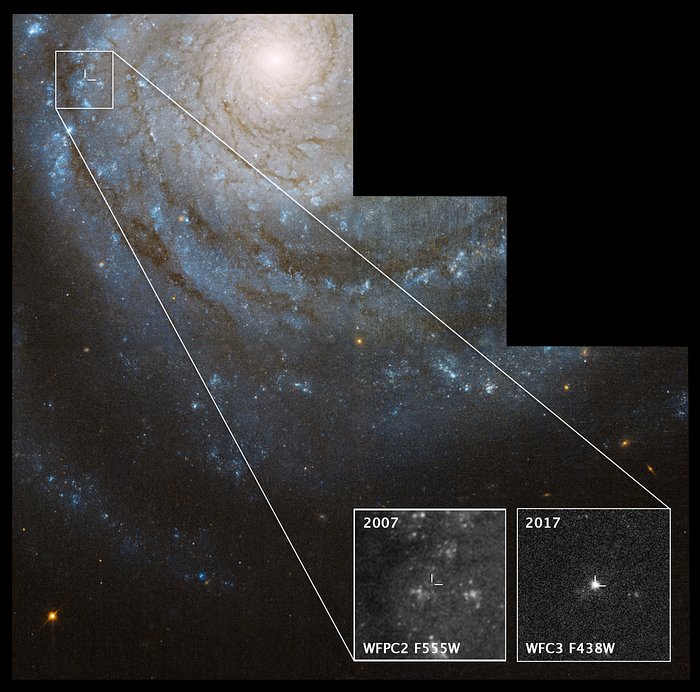Astronomers find a supernova's progenitor star in Hubble images
This NASA/ESA Hubble Space Telescope image of the nearby spiral galaxy NGC 3938 shows the location of supernova 2017ein, in a spiral arm near the bright core. The exploded star is a Type Ic supernova, thought to detonate after its massive star has shed or been stripped of its outer layers of hydrogen and helium.
Progenitor stars to Type Ic supernovas have been hard to find. But astronomers sifting through Hubble archival images may have uncovered the star that detonated as supernova 2017ein. The location of the candidate progenitor star is shown in the pullout box at bottom left, taken in 2007. The bright object in the box at bottom right is a close-up image of the supernova, taken by Hubble in 2017, shortly after the stellar blast.
NGC 3938 resides 65 million light-years away in the constellation Ursa Major (the Great Bear). The Hubble image of NGC 3938 was taken in 2007.
Links:
Credit:About the Image
NASA caption
| Id: | opo1847b |
| Type: | Collage |
| Release date: | 16 November 2018, 13:53 |
| Size: | 1556 x 1539 px |
About the Object
| Name: | NGC 3938, SN 2017ein |
| Type: | Local Universe : Star : Evolutionary Stage : Supernova Early Universe : Galaxy : Type : Spiral |
| Distance: | 65 million light years |
| Category: | Galaxies Stars |
Wallpapers
Colours & filters
| Band | Wavelength | Telescope |
|---|---|---|
| Optical V | 555 nm |
Hubble Space Telescope
WFPC2 |
| Optical I | 814 nm |
Hubble Space Telescope
WFPC2 |
| Optical I | 814 nm |
Hubble Space Telescope
WFC3 |
| Optical V | 555 nm |
Hubble Space Telescope
WFPC2 |
